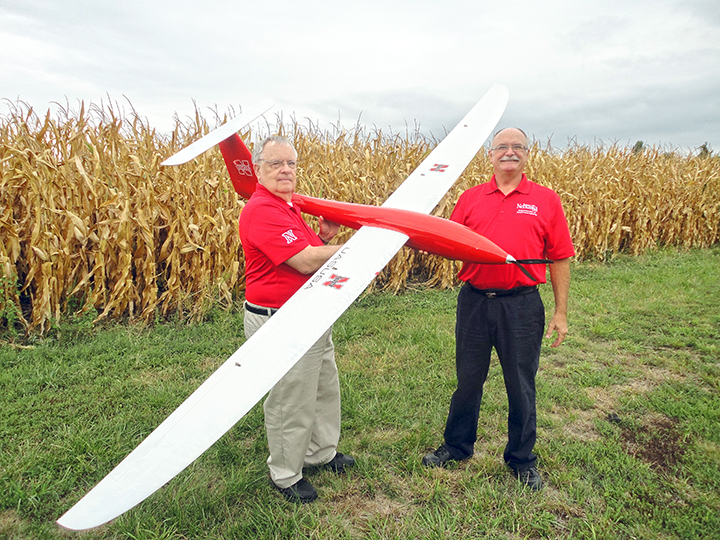
Shawna Richter-Ryerson | Natural Resources
Associate Professor Wayne Woldt was awarded the American Society of Agricultural and Biological Engineering Presidential Citation for his work on a three-part series on unmanned aircraft systems published in Resource magazine.
Woldt, who has a joint appointment in the School of Natural Resources and the Department of Biological Systems Engineering, was presented the award at the 2016 Annual International Meeting luncheon July 20 in Orlando, Florida. He has a research and extension appointment, and has been working with unmanned aircraft since 2012.
“This three-part special issue series has a focus on agriculture and where the use of unmanned aircraft may be heading into the future,” Woldt said. “Considering market projections for unmanned aircraft systems across a number of different studies, and a number of different market projections by different entities, unmanned aircraft for agriculture is projected to be about 70 percent of the business sector. It is projected to be the lion’s share of the unmanned aircraft market.”
The series was a team effort and gave a broad overview of unmanned aircraft, their potential use in agriculture, their potential challenges, rules and regulations governing their use, available and ever-changing technology and ongoing research related to unmanned aircraft in agriculture.
Using unmanned aircraft in agriculture and agriculture research is a change that occurred just within the last four years.
“Why hasn’t there been a longer track record of unmanned aircraft in agriculture?” Woldt said, “Because it has been illegal to fly unmanned aircraft for commercial purposes.”
Congress directed the Federal Aviation Administration to modify regulations four years ago, which began the process of opening the door for researchers and producers to get drones into the air. Woldt hasn’t looked back.
Since early in February 2012, his research has focused on using drones in agriculture, where he’s seen rapid changes prompting the projected shift to drone use on farms.
There are primarily three reasons, Woldt said:
1) Technology advancements, specifically auto-pilot technology, now allows for the unmanned aircraft to operate and fly in an autonomous mode.
2) Farmers are managing large areas of land and diverse landscapes. An aerial view provides a strategic advantage in terms of spotting issues: with equipment, irrigation management, pest infestations, and crop stress. “Unmanned aircraft provide an unparalleled view of the landscape,” Woldt said.
3) Economics. “You can get up there in a piloted aircraft with sensors on board, and still gather the information you need,” he said. “But the economics has shifted to unmanned aircraft as a less expensive way to do it. There isn’t all the overhead or other cost factors.”
As unmanned aircraft become cheaper, they will continue to become a more feasible and a reliable way to improve agricultural production and management of land. His research is leading toward the ability to provide producers with “information that is very high quality.” Woldt said he is striving toward, “data and information that can be integrated with other types of data and information across the farm, and used in management and strategic decision-making at the enterprise level.”
On Aug. 29, 2016, it will become legal to fly unmanned aircraft for commercial purposes once an individual meets the FAA requirements, which include passing a knowledge exam and earning their Remote Pilot Airman Certificate. And that just might be the final push the agriculture industry needs to make the transition to unmanned aircraft.
Read the three-part series
Part one: Click here.
Part two: Click here.
Part three, on page 14: Click here.
More details at: http://snr.unl.edu/